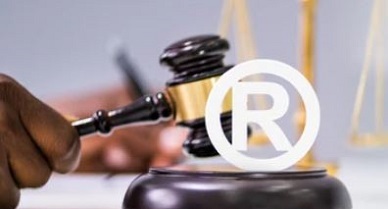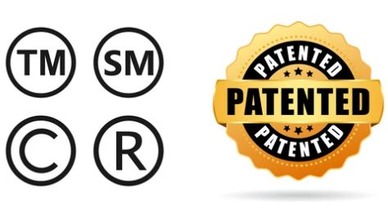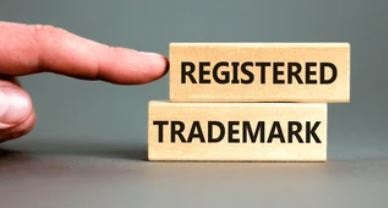An Explorative Study on the Liability of Domain Name Registrars with reference to Trademark Infringement.
Introduction
Domain names have begun to play an important role in online commercial activity and can be used to differentiate between various names and origins of goods and services. For example, the domain name “rli.com” stands for Reliance Industries Limited and represents both the company’s name and the distinct services it provides. Thus, there is an unmistakable similarity between domain names and trademarks, which is why domain names have been granted trademark recognition and protection. Reliance is also a registered trademark, and as such, it is protected from trademark infringement. The process of allotting and reserving domain names is handled by a domain name registrar who also regulates the assignment of IP addresses for those domain names. However, the same process does not include any examination or verification to determine whether the domain name is distinctive or capable of distinguishing itself from the competition, i.e., existing domain names that are clearly in violation of trademark law. Naturally, in the absence of specific legislation protecting domain names, the judicial opinion in protecting domain names in India relies on the principles of trademark law.
[Image Sources : Shutterstock]
Icann Rules
According to the ICANN rules, the domain name registrant is required to comply with all the standards, requirements, procedures and practices when entering into a Domain Name Registration Agreement with the Domain Name Registrar. This entails requiring them to obtain all the pre-requisite information before registering a domain name and ensure that the registrant does not end up in crossfire of a cybersquatting litigation or a suit for trademark infringement. The current domain name system accords a higher level of liability onto the registrant in interactions with the third-party including trademark related issues. To deal with domain name related disputes, the ICANN rules mandates a Uniform Dispute Resolution Policy in the domain name agreement whereby a dispute is settled through arbitration and conciliation or can be settled through litigation. This process is expensive and selectively entertain cases only against third party trademark violations. Neither the ICANN rules nor the agreement makes any mention or imposes any obligations on the Domain Name Registrar to check against trademark violations when offering domain names to the third party. In most cases, the registrars do not register domain names maliciously and with intent to cause prejudice to a trademark. Nevertheless, they are not required to review registration applications before reserving domain names.
Domain Name Registrars regulate domain name registration, and as previously stated, small, minor, or insignificant changes would be sufficient for any third party to register a very similar domain name. Domain name registrars contribute to trademark by allowing the registrar to induce third parties/ prospective buyers to purchase domain names that are well-known trademarks, thereby infringing the genuine trademark holder’s trademark. It is likely to then proceed to pass off or indulge in cybersquatting resulting in litigation between the third party and the genuine trademark holder when the problem could have been resolved at the root level by imposing a certain level of liability on the Domain Name Registrar. The Registrar should exercise some responsibility and necessary due diligence before offering the same to the general public via an electronic system-driven auction in which the highest bidder can obtain trademarks through a change in extension or minor modification
Dilution Theory
In terms of inclusion of the Dilution theory in Indian legislation, it was not fully reflected in S. 29 of The Trade And Merchandise Marks Act, 1958 but was only later on enacted in the Indian Trademark Act, 1999 under S. 29 (4) where a registered trademark is infringed when it is (a) identical with or similar to the registered trade mark,(b) is used in relation to goods or services which are not similar to those for which the trade mark is registered, (c) the registered trade mark has a reputation in India and the use of the mark without due cause takes unfair advantage of or is detrimental to, the distinctive character or repute of the registered trade mark. Thus, it is evident that the intention of trademark law can be attributed to the prevention of dilution of trademarks and action lies with the owner of the trademark in case of infringement of his right to use his distinctive trademark.
Domain Name Registrars play an important role in trademark protection and preventing dilution of distinctive and celebrated trademarks when allocating and selling domain names. Domain names have thus been recognised as trademarks in India, broadening the scope of a Domain Name Registrar’s responsibilities. Through this policy, courts with appropriate jurisdiction entertain all domain name related disputes and the obligation of preventing trademark violation primarily rests on the Domain Name registrant. It becomes extremely problematic, however, when Domain Name Registrars offer domain names that are already registered trademarks to the general public via an electronic system-driven auction in which the highest bidder can obtain third party trademarks. It is common for the issue to go unnoticed because Domain Name Registrars do not directly violate any ICANN rules by offering domain name variations via different extensions. More often than not, these domain names are associated with recognized or registered trademarks. In the event of a trademark infringement, the grievances of a genuine trademark holder against a third-party cybersquatting is covered by the dispute resolution process as well as Indian Trademark Law. The Domain Name Registrar arbitrarily offering a registered trademark or a deceptively and phonetically similar trademark to a third party stands in clear infringement of the rights of the trademark owner. This can be classified as deliberate and contributory infringement.
Conclusion
Finally, the owner of the trademark to prevent the use of his trademark for an unrelated commercial purpose or in a manner that might ruin the mark’s reputation publicly is dragged into the redressal system and is required to ultimately bear the time and cost of litigation. Without a doubt, this model benefits the Registrar who garners profits from selling registered trademarks to third parties at cheap rates at the cost of registered owners. This ultimately leads to dilution of the mark as its distinctiveness is marred and it also results in devaluation of the trademark in the eyes of the public. The sale of well-known trademarks as domain names with varied extensions falls under a commercial purpose and third-party usage of the mark demeans and disparages the valuation of the trademark and dilutes it. The dilution theory is highly effective in identifying the dangers involved in the continuation of such an arbitrary business model. The dilution of celebrated trademarks in the long run illustrates the need for a mechanism to regulate the windfall profits made by registrars at the cost of genuine trademark holders. In order to counter the problem of dilution, regulatory measures are to be devised to ensure that Domain Name Registrars have a vigorous process of verification before granting domain names to third parties.
Author: Snehal Khemka is a 4th year law student at the School of Law, Christ University, Bangalore, in case of any queries please contact/write back to us at support@ipandlegalfilings.com or IP & Legal Filing.
References-
- Rachna Bakhru, Should domain names receive the same protection as trademarks, LEXOLOGY (March 1, 2017), https://www.lexology.com/library/detail.aspx?g=0d91c805-3e4f-4322-8dae-acbe81c015b1
- Frank I. Schechter, The Rational Basis of Trademark Protection, 40 HARV. L. REV. 813, 821–24 (1927).
- Dilution (Trademark),CORNELL EDU,(Aug 11, 2020),https://www.law.cornell.edu/wex/dilution_(trademark).
- Federal Trademark Dilution Act, 15 U.S.C. § 1125(c)(2)(B) (1996).
- Thomas Bear & Sons Lb. v. Prayag Narain & Anr, 42 BOMLR 734 (1940).
- Indian Trademark Act, Section 29(4) (1999).
- Satyam Infoway Ltd v Siffynet Solutions, 6 SCC 145 (2004).
- Yahoo! Inc v. Akash Arora & Anr, 78 DLT 285 (1999).
- Academy of Motion Picture Arts and Sciences v. GoDaddy.com, Inc.,No. CV 10-03738 AB, 2015 WL 5311085
(C.D. Cal. Sept. 10, 2015).
- Federal Trademark Dilution Act 15 U.S.C. § 1225 (d) (1) (A) (i)-(ii) (1996).
- Supra note at 9.
- Lockheed Martin Corporation v. Network Solutions Inc, 1985 F. Supp. 949 (C.D. Cal. 1997)
- Planned Parenthood Fed’n of America. Inc. v. Bucci, 1997 WL 133313 (S.D.N.Y.1997).
14.Shiveh Roxana Reed, “Sensible Agnoticism : An Updated Approach to Domain Name Trademark Infrigement” 61 Duke L.J 1, 211-250, (2011).
- Id at 223.
- Warren B. Chik, Lord of Your Domain, But Master of None: The Need to Harmonize and Recalibrate the Domain Name Regime of Ownership and Control, 16 I.J.L.T 1, 8-72, (2008).



